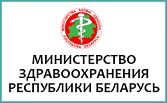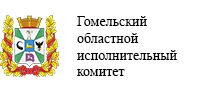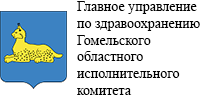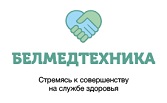Prevention and risk factors for breast cancer
A clear prevention system for most cancers has not yet been developed, since the causes themselves and the triggers for the development of the disease remain unclear. Currently, a huge number of studies are devoted to identifying the cause of breast cancer and its effective prevention. Therefore, doctors can not yet answer the question why some women have a mammary gland, while others do not.
Despite the lack of clear data on the causes of cancer, for each individual disease there are many links with factors that can provoke it. Prophylaxis of breast cancer can be effective only if the factors and conditions that contribute to the onset of the disease are integrated.
Risk Factors for Breast Cancer
- Social conditions of risk of breast cancer.
One of the main features of the development of modern society was the extensive involvement of women in social production, which led to a significant change in its social status and reproductive behavior. The modern type of reproductive behavior, focused on low birth rate, has turned into a factor of cancer risk. By giving birth to a certain number of children, using this or that means of restriction of childbirth, the woman, without knowing it herself, influences the probability of the appearance of breast cancer in her.
In modern conditions, with a regulated birth rate, women who have married after 30 years on average have significantly fewer children than younger children. Meanwhile, the probability of entering into the first marriage of those over 30 or more years old is now higher compared to the past. In turn, the older a woman, the more reduced her ability to fertilize and bear fruit. This is exacerbated by the spread of abortions before marriage, which often leads to secondary infertility. As a result of this objective factor, the frequency of infertile marriages is significantly greater among those who are late marriage.
Genital function is a natural process for the female body. A normal pregnancy should be terminated by birth. Abortion is a kind of hormonal stress. Pregnancy, childbirth, abortion have an active influence on the hormonal balance of the woman's body.
- Reproductive status of women
In this concept for the risk group include the early menarche (up to 13 years), the late protracted period of menopause (after 55 years), late first birth or no birth, abortion, inflammation of the pelvic organs.
Most women have menstruation at the age of 13-14. The sooner puberty begins and menstruation begins, the greater the risk of cancer of this organ. Sexual acceleration in the modern world contributes to a number of negative factors: cosmetics, shampoos, hair dye, containing hormones, genetically modified foods and so on. Most often, early maturation is observed in girls with excess weight, and such children early stop growing. The modern generation of girls consumes more sweet high-calorie food than their predecessors, but fewer fresh fruits and vegetables. Modern girls prefer to travel by car, rather than on foot. The combination of a high-calorie diet with a sedentary lifestyle leads to an increase in the incidence of obesity and can be a possible explanation for earlier puberty.
It is established that the earlier a woman began to live a sexual life, first became pregnant and gave birth to the first child, the less the risk of breast cancer.
The negative consequences of the interruption of the first pregnancy, its effect on the increased risk of the incidence of breast cancer have been noted. On the contrary, childbirth at the first pregnancy leaves its protective trace on all generations of women. Therefore, a young woman who solves the dilemma to save or not keep the first pregnancy should think about the risk of breast cancer in the future.
It's no secret that the main purpose of the breast is lactation (formation and excretion of milk). The duration of breastfeeding has a very weak, almost insignificant, connection with the incidence. A more significant role is played not by the duration of lactation, but by the secretory activity of the mammary glands, more precisely, by the usefulness of the secretion of milk, depending both on factors of the internal environment and external. Stimulation of the secretory activity of the mammary glands during the feeding of the child (especially in cases of its insufficiency) can have a significant preventive value.
- The influence of nutrition and harmful household habits (smoking and alcohol)
Among the dietary factors, the favorable role of milk consumption has been established. The more often a woman uses milk, the less the risk of morbidity. Fatty food in general has an adverse effect, being a risk factor for cancer of various organs. However, the use of butter in this regard is an exception. It has a positive effect along with milk. Other types of fats, especially lard, play a negative role.
Among the various microelements, iodine is very important in this process. It is necessary for the normal functioning of breast tissue. The breast tissue, in which iodine is inadequate, is more sensitive to the action of carcinogens. Iodine deficiency manifests itself already at the stage of precancerous diseases of the breast.
The increase in the spread of harmful household habits (smoking and alcohol) among the female population occurs in parallel with an increase in the incidence of breast cancer. With the increase in the consumption of alcoholic beverages, the incidence of menstrual function disorders increases. The risk of cancer increases with the increase in the number and strength of alcoholic beverages consumed.
Smoking has a significant effect on reproductive function. Under his influence, the length of pregnancy and the time of conception are lengthened. Smoking affects not only the hormonal balance of the female body, but also the lactational function of the breast. Smoking mothers stop breastfeeding their babies very quickly. This is mainly due to two reasons: the specific taste of breast milk from smoking mothers and the progressively decreasing amount of milk in the breast.
- Heredity and breast cancer
It is estimated that about 5% of all cases of this disease are the result of a hereditary predisposition, in which genes that are often found in the population and are transmitted in an autosomal dominant type are involved. The study of DNA in families with breast cancer confirmed the genetic conditionality of it in some of these families. The first mutant breast cancer gene (BRCA I-Breast Cancer Associated gene) was identified in chromosome 17 and the second gene (BRCA II) in chromosome 13.
The carrier of the BRCA I gene (17 chromosomes) increases the risk of developing breast cancer to 80%, and up to 50% at the age of up to 50 years. In addition, up to 44% increased risk of developing ovarian cancer regardless of age;
Carrying out the BRCA II gene (chromosome 13) leads to an increase in the risk of developing a highly differentiated breast carcinoma to 70%.
This fact can be easily established by using the services of genetic counseling. Timely establishment of the presence of this risk factor will allow more carefully (on an individual schedule) to observe dynamically not only the patient herself, but all her blood relatives.
Mutations in somatic cells are reproduced only when they are divided and the offspring are not transmitted. But if the gene mutation occurs in the sex cell of one of the parents, it will be passed on from generation to generation. Such a person will be a carrier of a mutant gene, but this does not mean that he will necessarily fall ill with cancer. This only creates a predisposition to the disease. To have a tumor in the carrier of a hereditary mutation, it is necessary to awaken it. And in this the role may again play a meeting with carcinogens. Consequently, the quality of the environment, the way of life play an important role in the emergence of a tumor in people with a hereditary predisposition to it.
- Fibrocystic disease
Or dyshormonal dysplasia or more habitually - mastopathy. A fairly widespread diffuse process, characterized by an abnormal ratio of epithelial and connective tissue elements in the breast tissue. According to statistics, they suffer from 52 to 63% of women, but this does not mean that, having such a diagnosis, the patient always falls into the group of high risk.
In terms of the incidence of breast cancer, the degree of proliferative activity of the epithelium in mastopathy matters. So, with atypical proliferation, the risk increases more than 3 times, and when combined with a family history, the higher.
To significantly reduce the risk of developing malignant neoplasms, it is enough to adopt some fairly simple rules. This is all that is included in the concept of a "healthy lifestyle":
- To give up smoking
- Fighting overweight
- Regular exercise
- Diet with daily consumption of plant foods, dairy products, restriction of consumption of red meat; Refusal from oily and spicy food
- Regular check-ups and examinations in accordance with age and risk group.



















